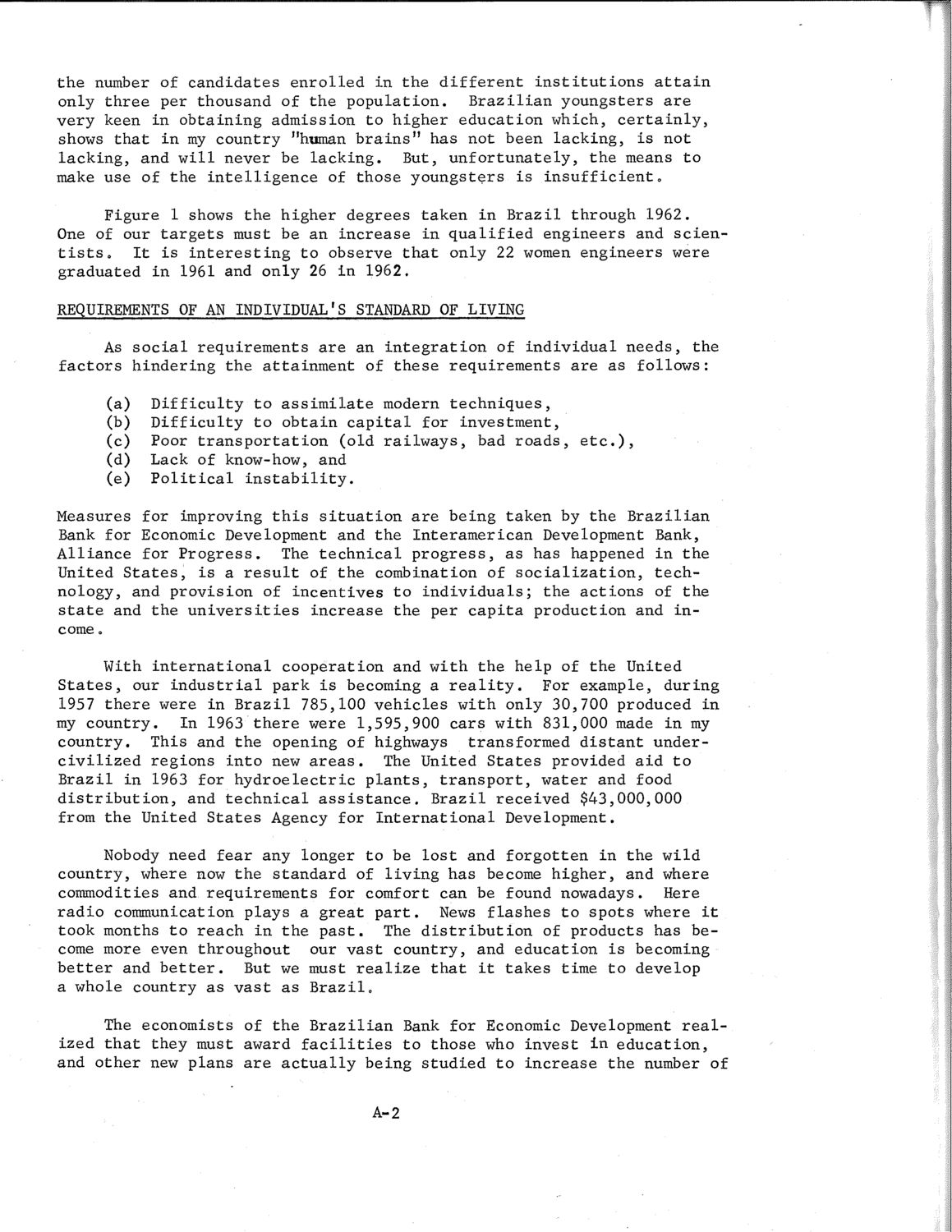| |
| |
Caption: SWE - Proceedings of the First International Conference of Women Engineers and Scientists
This is a reduced-resolution page image for fast online browsing.

EXTRACTED TEXT FROM PAGE:
the number of candidates enrolled in the different institutions attain only three per thousand of the population. Brazilian youngsters are very keen in obtaining admission to higher education which, certainly, shows that in my country "human brains" has not been lacking, is not lacking, and will never be lacking. But, unfortunately, the means to make use of the intelligence of those youngsters is insufficient. Figure 1 shows the higher degrees taken in Brazil through 1962. One of our targets must be an increase in qualified engineers and scien tists. It is interesting to observe that only 22 women engineers were graduated in 1961 and only 26 in 1962. REQUIREMENTS OF AN INDIVIDUAL'S STANDARD OF LIVING As social requirements are an integration of individual needs, the factors hindering the attainment of these requirements are as follows: (a) (b) (c) (d) (e) Difficulty to assimilate modern techniques, Difficulty to obtain capital for investment, Poor transportation (old railways, bad roads, etc.), Lack of know-how, and Political instability. Measures for improving this situation are being taken by the Brazilian Bank for Economic Development and the Interamerican Development Bank, Alliance for Progress. The technical progress, as has happened in the United States, is a result of the combination of socialization, technology, and provision of incentives to individuals; the actions of the state and the universities increase the per capita production and income „ With international cooperation and with the help of the United States, our industrial park is becoming a reality. For example, during 1957 there were in Brazil 785,100 vehicles with only 30,700 produced in my country. In 1963 there were 1,595,900 cars with 831,000 made in my country. This and the opening of highways transformed distant undercivilized regions into new areas. The United States provided aid to Brazil in 1963 for hydroelectric plants, transport, water and food distribution, and technical assistance. Brazil received $43,000,000 from the United States Agency for International Development. Nobody need fear any longer to be lost and forgotten in the wild country, where now the standard of living has become higher, and where commodities and requirements for comfort can be found nowadays. Here radio communication plays a great part. News flashes to spots where it took months to reach in the past. The distribution of products has become more even throughout our vast country, and education is becoming better and better. But we must realize that it takes time to develop a whole country as vast as Brazil. The economists of the Brazilian Bank for Economic Development real ized that they must award facilities to those who invest in education, and other new plans are actually being studied to increase the number o A-2
| |